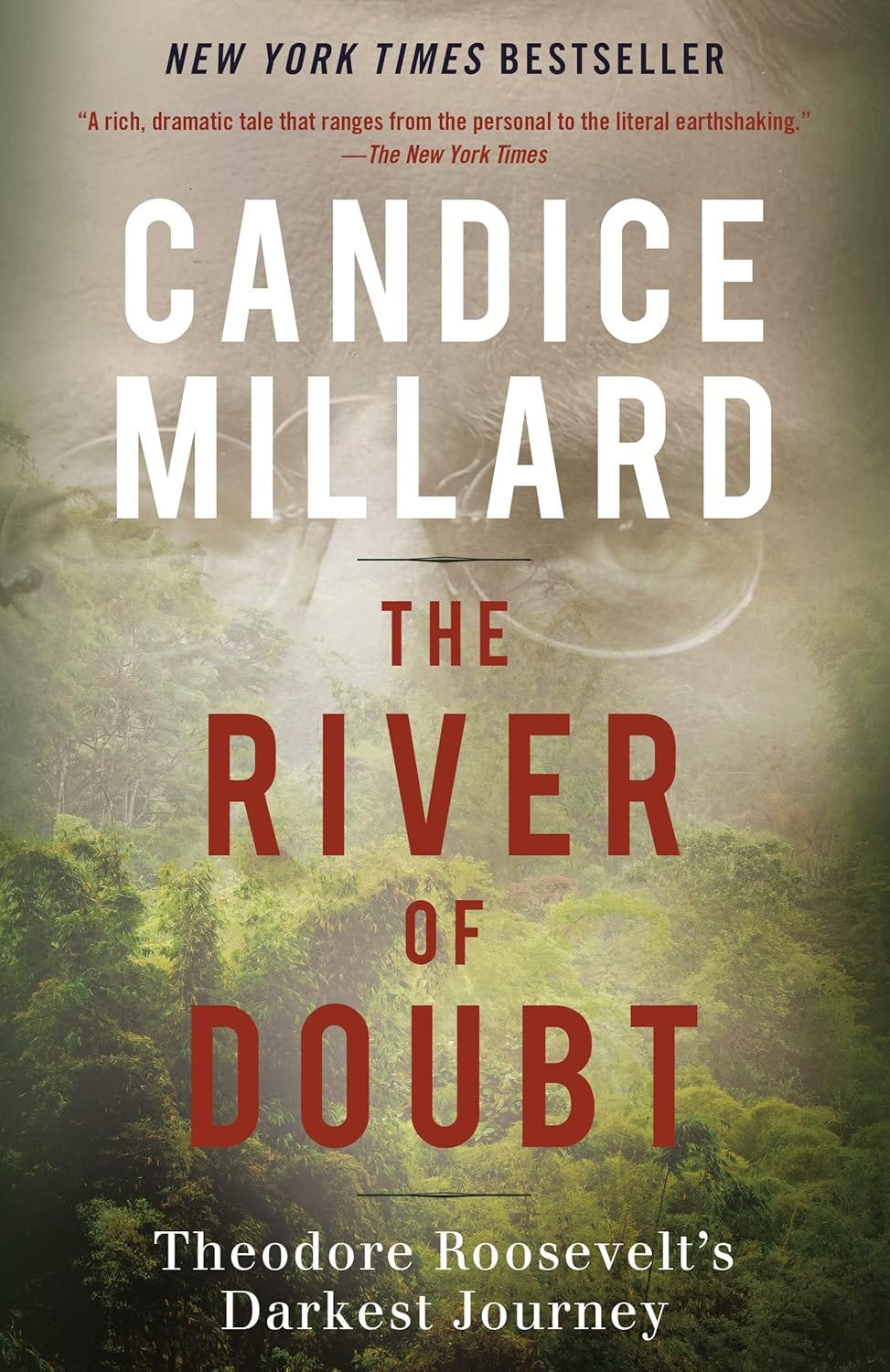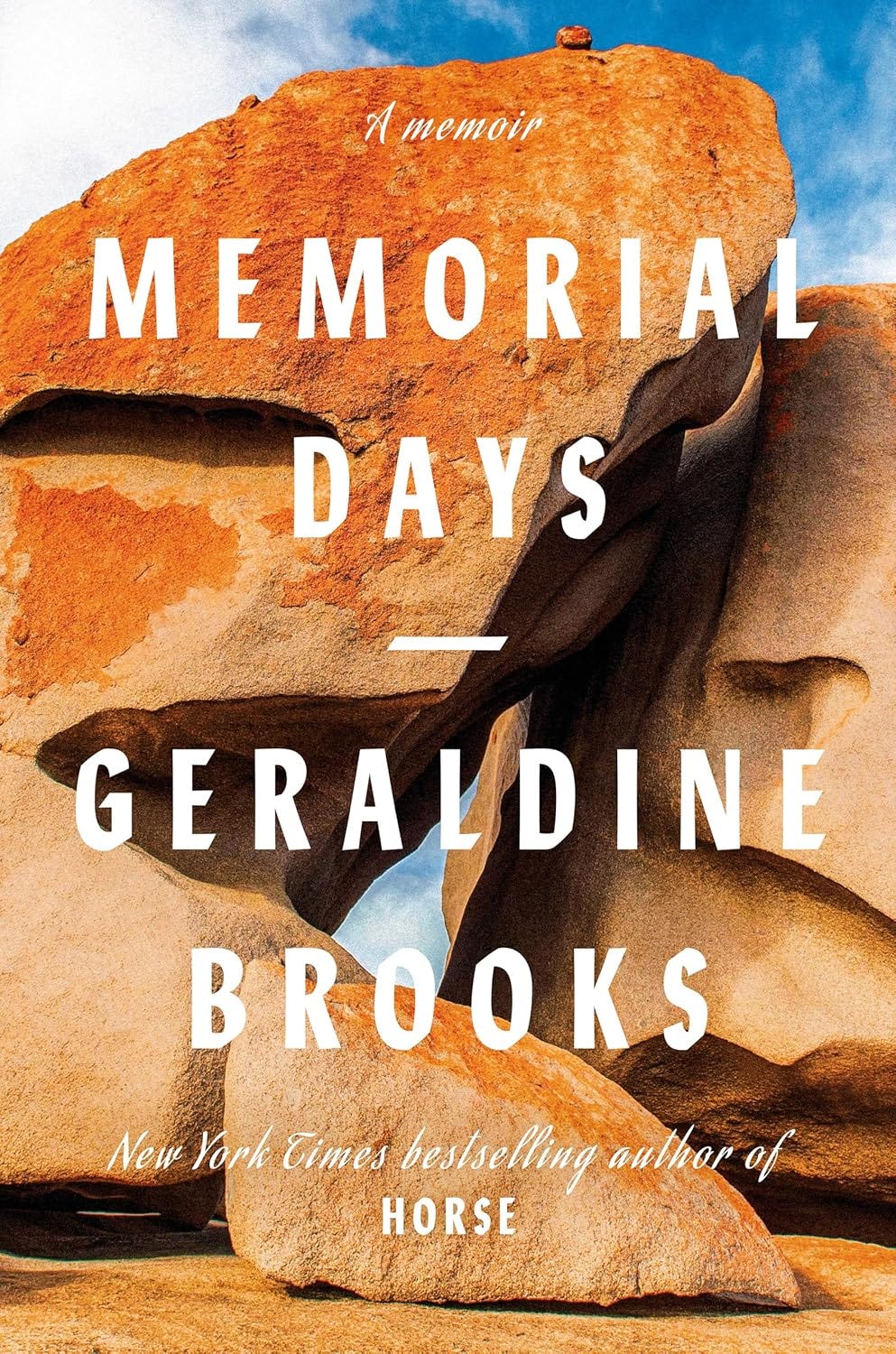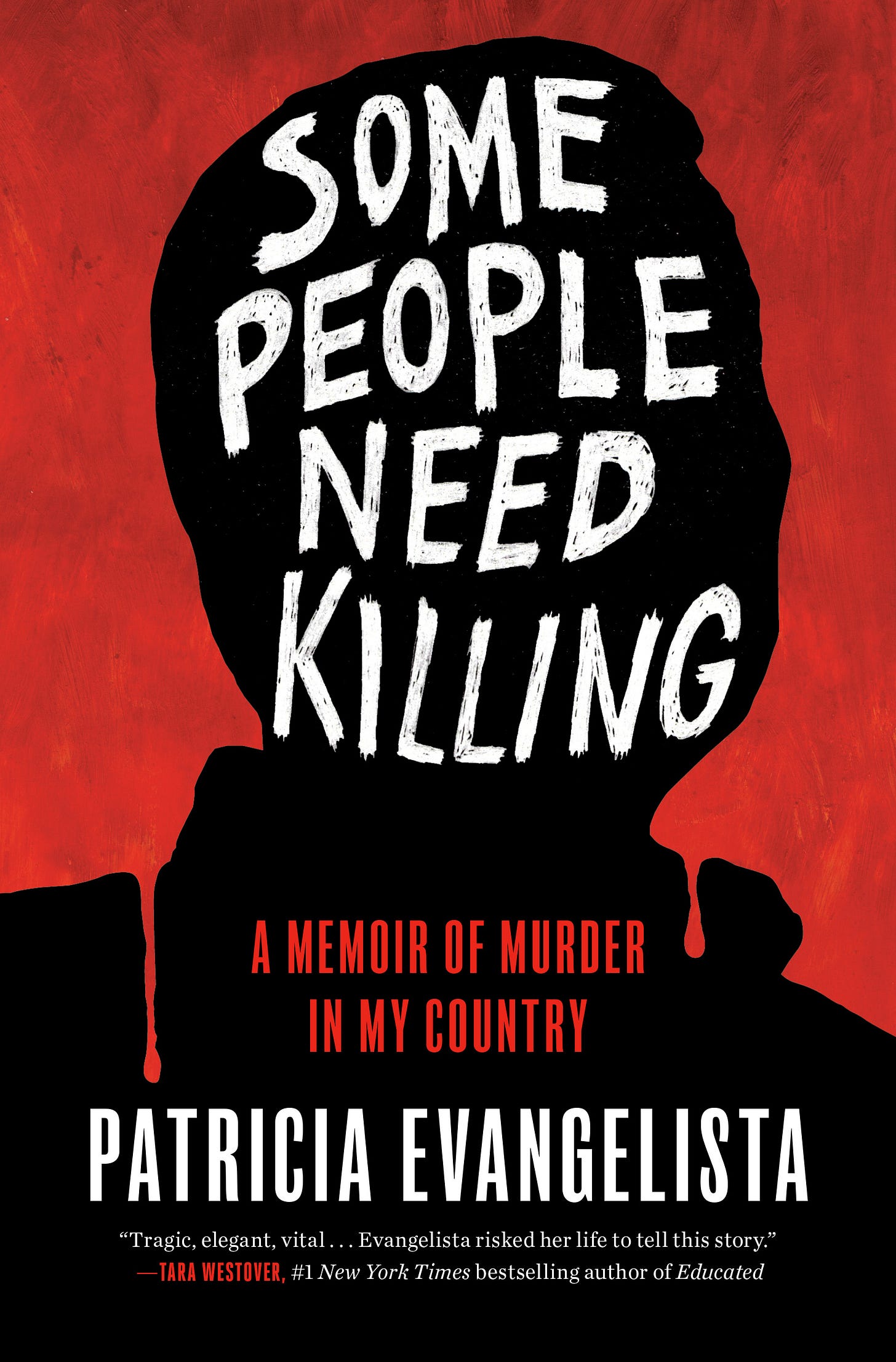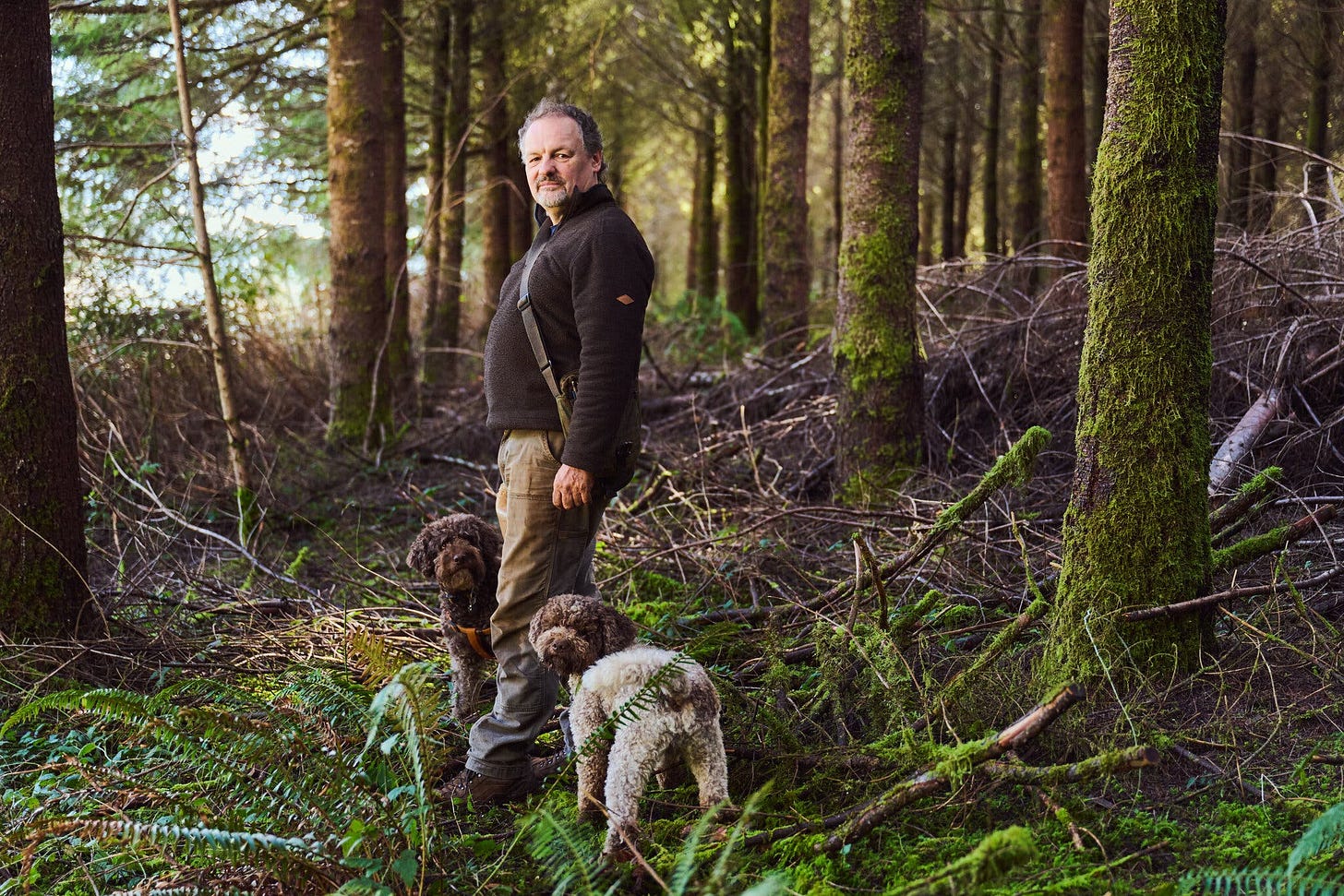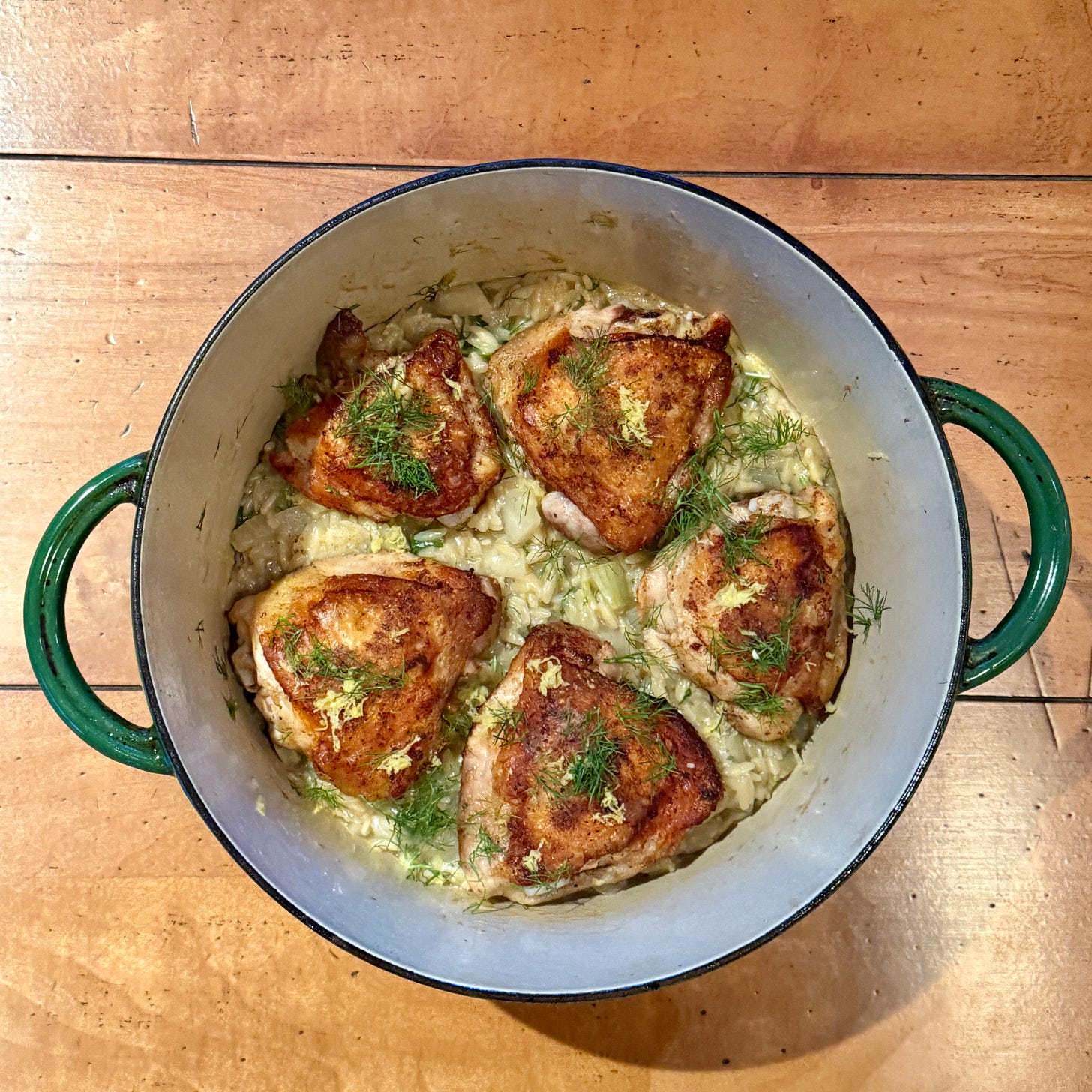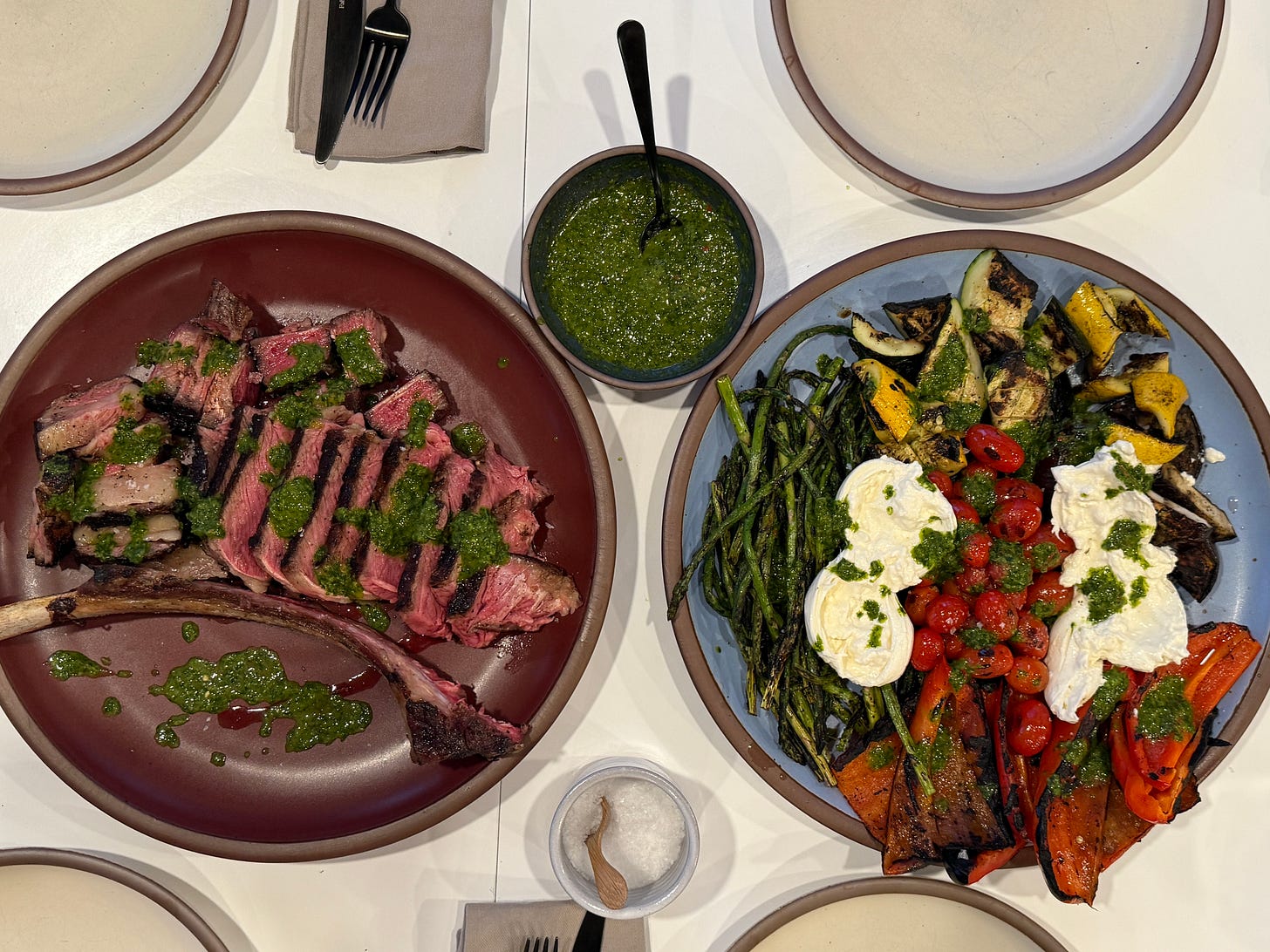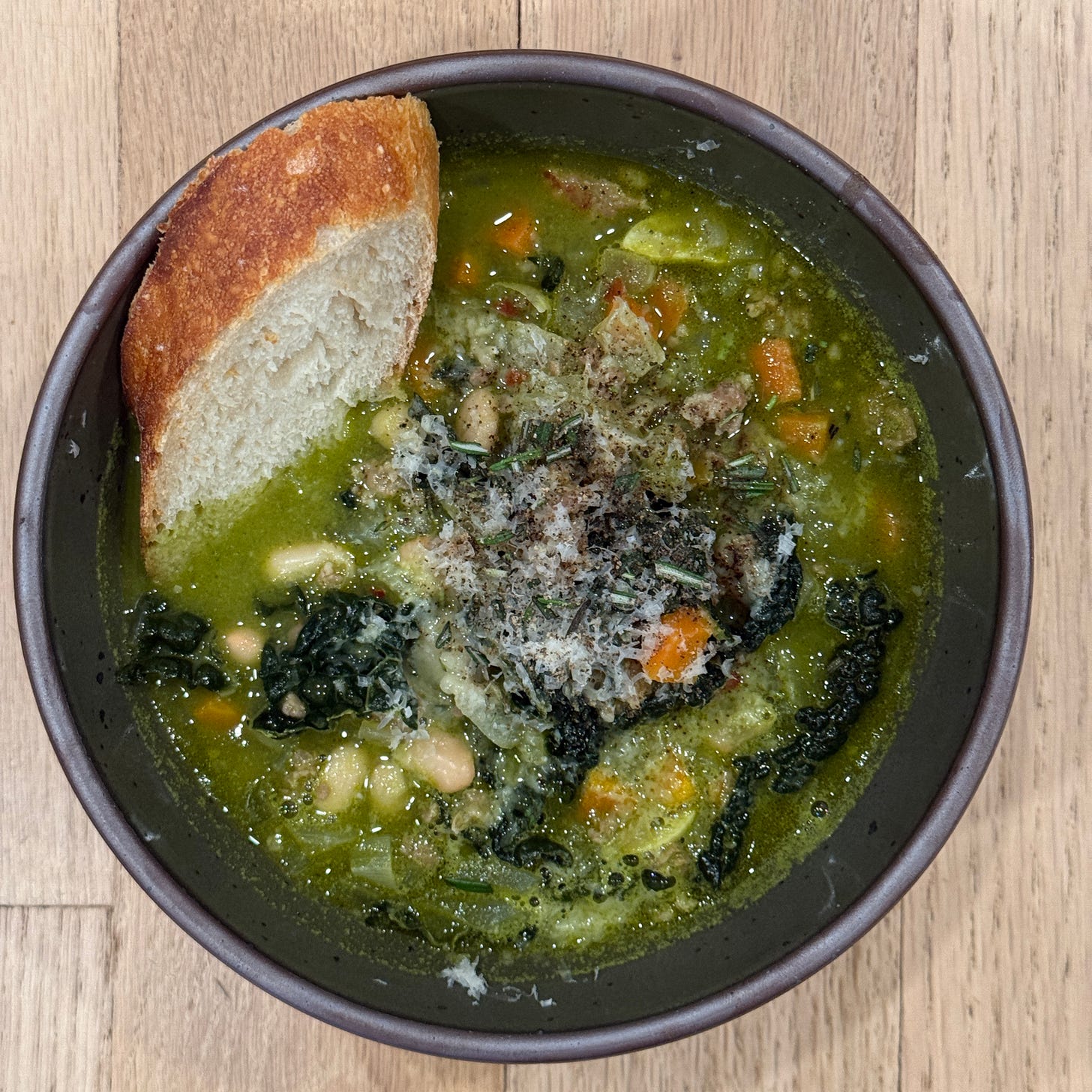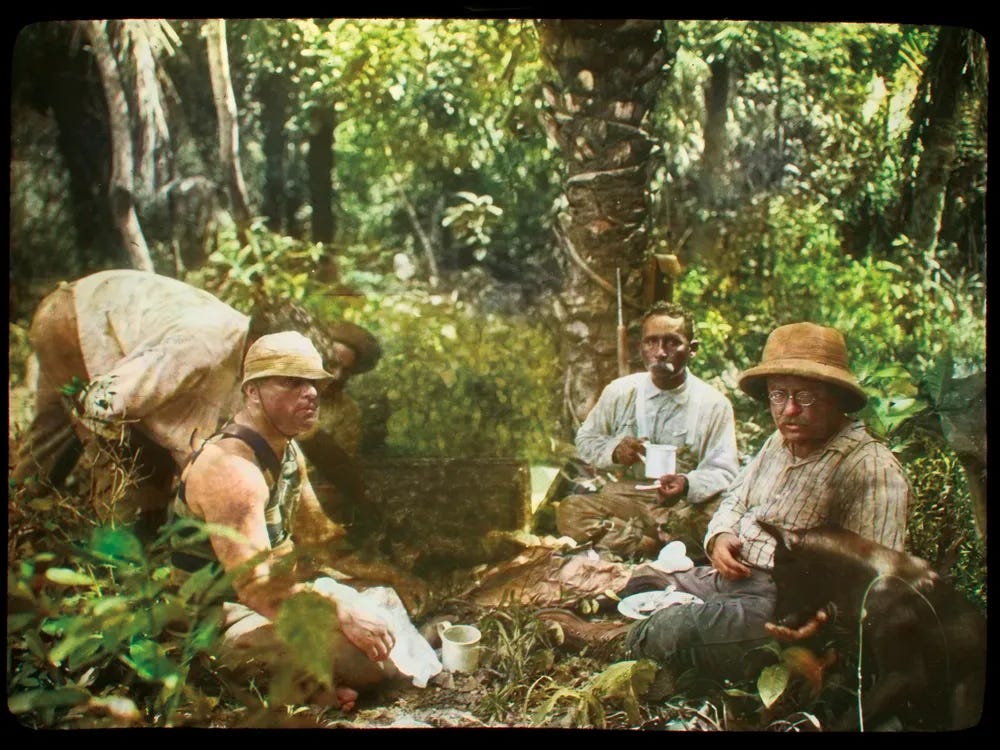
Good morning!
This past week, I read two nonfiction books—The River of Doubt by Candice Millard (a nonfiction account of Theodore Roosevelt’s 1912 Amazonian expedition) and Memorial Days by Geraldine Brooks (a memoir about Brooks reflecting on the sudden death of her husband). I also read one contemporary fiction work, Tartufo by Kira Jane Buxton (about a fictional small Tuscan village where a six-pound white truffle is found). Let’s get into it.
read📖→
The River of Doubt: Theodore Roosevelt’s Darkest Journey by Candice Millard
The River of Doubt reconstructs President Theodore Roosevelt’s 1913-1914 exploration of the Rio da Dúvida, the River of Doubt, which was later renamed River Roosevelt.
Overview: Theodore Roosevelt treated death-defying explorations a bit like rebound relationships. He went to the Dakota Badlands after his first wife and mother died on the same day. After he decided not to seek reelection in 1909 (he became president after McKinley was assassinated in 1901 and ran and won in 1904), he left on a year-long safari in Africa (with over 250 porters!).
While Roosevelt had let Taft take over the Republican Party, he was unhappy with Taft’s policies. Roosevelt decided to run again as a third-party candidate in 1912 to unseat Taft. Both Roosevelt and Taft lost to Woodrow Wilson. While Roosevelt won twenty-nine percent of the popular vote, he was humiliated. Roosevelt planned an Amazonian expedition after his defeat.
The American Museum of Natural History partially sponsored Roosevelt’s Amazonian exploration, which aimed to be the first known descent of the unmapped River of Doubt. He and Colonel Cândido Mariano da Silva Rondon, a famous Brazilian explorer who had discovered the River of Doubt’s headwaters in 1909, led the expedition. Nineteen men set out, including Rondon, Roosevelt, and Roosevelt’s son, Kermit. The former president was fifty-five when the expedition set out and was prepared to give this expedition everything he had: “If it is necessary for me to leave my bones in South America, I am quite ready to do so.”
While Rondon was a talented guide and leader, the expedition had problems at the outset, partly due to Roosevelt’s personnel choices. Roosevelt’s friend, Reverand John Augustine Zahm, hired Anthony Fiala as quartermaster. Fiala proved to be incompetent. He packed “gourmet condiments,” like stuffed olives, wine, and expensive mustards, but very little meat. The group didn’t realize this until several weeks into the expedition, and they were forced to subsist on a starvation diet.
Fiala and Zahm also had procured boats that proved too heavy for overland travel (the group needed to drag the boats overland to avoid impassable rapids), so the group had to buy dugout canoes from a local tribe.
Of the nineteen men that set out, sixteen returned. They faced malaria, starvation, antagonistic local tribes, murder within their own party, venomous snakes, piranhas, jaguars, and deadly rapids. Reading The River of Doubt, it’s clear that none of the men would have survived with Rondon. Roosevelt nearly took his own life. He brought a deadly dose of morphine on the trip, which he had carried around for years through his adventures in the American West and Southern Africa in case he suffered from an untreatable medical injury or condition. Roosevelt survived his Amazon journey, although he never fully recovered from his ailments and died a few years later in 1919.
Opinion: I’ve recently read a few books by Candice Millard (River of the Gods and Hero of the Empire). I really enjoy her writing; her narrative nonfiction books read like fiction. The River of Doubt was her debut novel, published in 2005. It is another unbelievable adventure novel, and I liked reading more about Roosevelt’s time after his failed 1912 presidential run.
However, this book is probably my least favorite. One potential pitfall with narrative nonfiction is that the writer tends to take you down their research rabbit holes, unless it is a very tightly edited book like Alfred Lansing’s Endurance. These tangents can be both good and bad. I have enjoyed Millard’s asides of different peoples and cultures in her other books.
In The River of Doubt, Millard devotes much time to explaining the biology of the Amazonian flora and fauna. While some of this information interested me, these extraneous sections slowed the book down. I also wasn’t sure how accurate this scientific information was, given that the book was published two decades ago. For instance, Millard explains how sloths cannot pick up their young because of their long, sharp claws, but it does seem that sloths can pick up their young.
But these critiques are relatively minor! The pace really picked up about two-thirds into the book, and I struggled to put it down.
Overall: I would recommend The River of Doubt to those who like historical narrative nonfiction or are interested in learning more about President Theodore Roosevelt’s expeditions. If you don’t have time to read this book, you can also check out this article from the Smithsonian Magazine.
Rating: 3.8/5
Genre: Nonfiction (Historical Narrative)
Notable prizes/book clubs/lists: Named one of the best books of the year by the New York Times and Washington Post; William Rockhill Nelson Award Winner (2005)
Page count: 416 pages
Audio: 12 hours 17 minutes
Movie/TV pairings: The Lost City of Z
Food pairings: An expensive charcuterie board that you could not survive in the wilderness on (Rhine whine, stuffed olives, and mustard)
Memorial Days by Geraldine Brooks
In Memorial Days, author Geraldine Brooks reflects on the sudden death of her husband.
Overview: On Memorial Day in 2019, Brooks’s husband, Tony Horowitz, died suddenly. He was sixty years old. Brooks and Horowitz met at journalism school and later became foreign correspondents and novelists. When working at The Wall Street Journal, “editors began to refer to us in news meetings as Hobro, and that was how we increasingly saw ourselves. Beyond partners, essentially one person.” Both have won Pulitzer Prizes for their writing—Brooks’s March won the Pulitzer Prize for Fiction in 2006. While Brooks is from Australia, they raised their two sons primarily on Martha’s Vineyard.
Three years after Horowitz’s death, Brooks spent a month alone on Flinders Island, off the coast of Tasmania, to finally give herself space to mourn: “I have not permitted myself the time and space for a grief deep enough to reflect our love.” As Brooks notes, “Nothing like a geological timeline to put you in your place.” Brooks weaves in her experiences on Flinders Island, memories with Horowitz and her family, recollections of the days around his death, and observations on how other cultures grieve their loved ones.
Opinion: I am a fan of Brooks’s writing, so I picked up Memorial Days from my library as soon as they acquired a copy. Grief memoirs can be difficult reads, but they are some of the most moving memoirs I’ve read. Like in Joan Didion’s My Year of Magical Thinking, Brooks mourns the loss of her husband after a long marriage.
Overall: I definitely recommend this memoir. It is a well-written, raw portrayal of grief as she navigates her grief and who she is without her long-term partner.
Rating: 3.9/5
Genre: Nonfiction (Memoir)
Page count: 224 pages
Audio: 4 hours 56 minutes
Movie/TV pairings: Wild
Tartufo is a contemporary fiction book about a small Tuscan village where the biggest white truffle ever is found.
Overview: Tartufo is set in contemporary Tuscany in a fictional village called Lazzarini Boscarino. The village is struggling after some devastating landslides and struggles to attract tourists. Instead, tourists flock to nearby towns, like a village that was once destroyed by an earthquake but has now become an artist’s haven or Calcata, which once held the foreskin of Jesus Christ. The newly elected mayor, Delizia Micucci, who narrowly lost the mayoral race to a geriatric donkey, Maurizio, is determined to turn things around.
Then one day, the recently widowed Giovanni Scarpazza is walking through the woods with his truffle-hunting dogs, Aria and Fagiolo. Aria finds an “epicurean diamond”—a nearly perfect, giant white truffle weighing 6 pounds, 14 ounces. Mayor Delizia organizes an auction with Sotheby’s in the town in a few days. And just like that, Lazzarini Boscarino goes viral as reporters and interested buyers descend on the tiny village.
Opinion: Tartufo isn’t the type of book I’m typically drawn to. I picked up this one up from my library because of its vibrant, fun cover (and after a quick skim of this positive Washington Post review of the book). It’s a funny novel with a My Big Fat Greek Wedding or Gilmore Girls type of eccentric, small-town comedy. This isn’t my exact sense of humor, but this was a delightful, happy read, especially given the darker topics of the other books I read last week.
Buxton paints a vivid picture of the fictional village of Lazzarini Boscarino. It’s easy to picture, and the townspeople are lovable, even though they are a bit cartoon-ish.
Tartufo also focuses on a fun and different subject matter. I didn’t realize that Sotheby’s organized food auctions (like for white truffles or rare teas). The most expensive white truffle ever sold was in 2007—$330,000 for a 2-pound, 13-ounce white truffle. That said, I did find the plot to be a bit boring at times.
Overall: I enjoyed this book, even if it’s nothing groundbreaking. I would recommend it to someone who likes this quirky, small-town humor.
Rating: 3.1/5
Genre: Contemporary Fiction (Comedy)
Page count: 352 pages
Audio: 11 hours 31 minutes
Movie/TV pairings: My Big Fat Greek Wedding; Gilmore Girls; Under the Tuscan Sun
consumed 🎬🎧🗞️→
Never Let Me Go is one of my favorite novels. The twentieth-anniversary edition just came out, and Kazuo Ishiguro gave this interview explaining why the characters in his dystopian novel don’t rebel:
The fascinating thing for me is the way people respond to being dealt a really bad hand. And sometimes it seems to me that if there is all you know, if that’s the world you have grown up in, you cannot see the boundaries for which you have to run. You cannot see what you have to rebel against, and instead you just try, sometimes heroically, to find love, friendship, something meaningful and decent within the horrific fate that you’ve been given.
Former Philippine President Rodrigo Duterte was arrested last week. I highly recommend reading Some People Need Killing by Patricia Evangelista, an on-the-ground account of the nation’s drug war and state-sanctioned killing of its citizens. It was one of the best books I read last year.
I still can’t wrap my head around Anora’s $18-million marketing campaign. The film’s budget was just $6 million. Based on what I’ve read online, it seems like Harvey Weinstein started this type of modern awards campaigning.
In truffle news: The rush is on for Oregon truffles. Also, the dogs pictured in this article are adorable.
cooked 🍳→
One-skillet chicken with buttery orzo. This recipe is relatively easy and requires only one pot!
Steak, chimichurri, and grilled vegetables.





